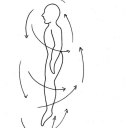-
 RT-Chris
posted in technical issues • read more
RT-Chris
posted in technical issues • read more@stefano_zorzanello sounds like something to do with permissions. Can you open pd as administrator?
-
 RT-Chris
posted in output~ • read more
RT-Chris
posted in output~ • read morejust realised when you go to download it it adds some horrible number the the name of the patch. I remember reading this forum does that to file downloads. Best to rename it to "scope~.pd" when you download it, as will be much easier to find and call into patches in the future.
-
 RT-Chris
posted in output~ • read more
RT-Chris
posted in output~ • read more@esaruoho scope~.pd its a basic abstraction I made, think there are plenty like this about from extended and in Else probably too... just pop it in your "extras" folder of your PD directory and you should be able to call on it in any patch as an object [scope~] (it does the $0- bit itself, so you can use a lot of them in one patch if you want). Let me know if it works, I've never uploaded a patch before. Also I run Purr data, so probably won't look the same...
-
 RT-Chris
posted in news • read more
RT-Chris
posted in news • read more@Spacechild1 Thanks, I'll give this a try. Sorry, really just my first time trying to get externals to work in Purr Data, that's really my problem i guess. Will report back if I get this working.
-
 RT-Chris
posted in news • read more
RT-Chris
posted in news • read moreSorry @Spacechild1, you're right. I'm working on windows OS, I've just put the vstplugin folder into the /extras folder for Purr data, and tried adding it as a library to the startup window, but doesn't seem to load. Just wondering if you had any experience installing it on Purr Data, I can't tell if I'm going about it the right way, or if it's even possible...I have no experience with compiling, so was hoping to avoid that...maybe this is a question more for @jancsika
-
 RT-Chris
posted in news • read more
RT-Chris
posted in news • read more@Spacechild1 Hi, thanks for all your work on this. I was trying to get this to work in Purr Data, but don't seem to have had any luck. have you heard of anyone using this in Purr Data, or is it even possible?
-
 RT-Chris
posted in technical issues • read more
RT-Chris
posted in technical issues • read moreAmazing, that's really very helpful, thank you David!

I've been keen to explore beyond the standard lop, hip and bp too, so this will help a lot with that too. Yeah I'm beginning to understand the general idea of how it works, but implementing it is another thing. This will help a lot. One of those moments when I think I've learned enough to feel I've broken through to some kind of intermediate stage, and then...
-
 RT-Chris
posted in technical issues • read more
RT-Chris
posted in technical issues • read moreThank you, appreciate the link, and for feeding back about the Hadamard matrix. I guess there's no way around just having to learn how to read calculus if I want to work with filters...

